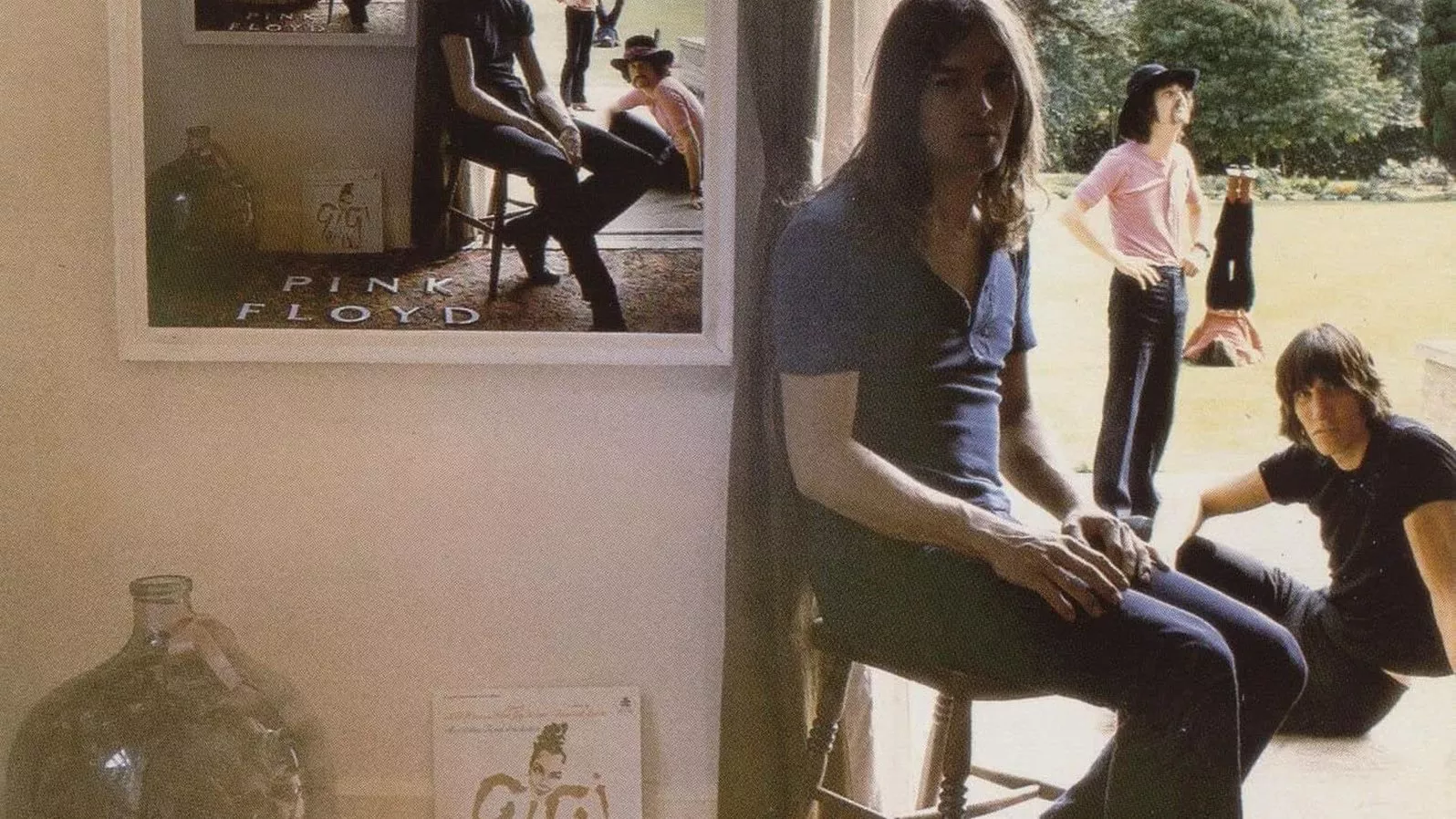
Story behind the record cover: Ummagumma (1969) - Pink Floyd
"That must be a very special LP. “Gigi”. It stands upright against the wall in the background of the cover of the album “Ummagumma” from Pink Floyd. On the American pressing, a white surface is pasted over it. Why was “Gigi” censored in America? Were there any naked women on it? Were rude lyrics sung? As a Pink Floyd fan, I soon had both copies, the English and the American version, in my record collection. But I couldn't find “Gigi” anywhere. The Internet and Discogs, some kind of auction site for purchasing LPs, did not yet exist in the 1970s.
“Gigi” and Pink Floyd faded into the background, because I fell under the spell of Yes. Until a few years ago I suddenly saw “Gigi” standing in a nickel-and-dime section in London. In retrospect I could have easily ordered the LP online, because that's how it’s done these days. But actually, searching through record bins is much more fun. Often your eye gets caught by something special. You then buy it for one or two euros. If you're lucky, you'll get something beautiful like this. Even if it's just a great looking cover.
That's how I got hold of “Gigi”. It made my heart beat faster. What kind of obscure images would I come across? What foul language was used? Nothing could be farther from the truth. “Gigi” is an American musical from the fifties. Album cover and music exude bourgeois American standards. Both cover and music remain well within the limits of decency. All very respectable.
That was quite a setback. Musicals aren't the genre to wake me up to right now. When I take over a collection of LPs, the musicals usually go straight into the trash.
Then why was “Gigi” banned on the American pressing of “Ummagumma”? It turns out it all had to do with copyright and money. The creative artists from design agency Hipgnosis had not asked permission from the publisher of “Gigi” and then you are screwed in the music world. Some people immediately smell money and before you know it, you are faced with a claim. "Cooperation always ends with conversations about money”, my father had taught me, but it turned out that Storm Thorgerson, photographer and cover designer, didn't get this message from his father. He was still at the beginning of his career with his famous design studio.
At the time of “Ummagumma” the Pink Floyd band members were just students. Storm was a childhood friend of theirs. For “Ummagumma” he took the band members to his girlfriend's house in Cambridge. If you opened up the back door, you had a nice view of the gardens. Storm took some pictures there. The band members wanted to radiate something of equality. Moreover, not one band member was so handsome to increase album sales (it would also be the last album cover of Pink Floyd featuring band members).
Storm came up with the idea of the so called ‘Droste effect’, also known as ‘mise en abyme’ in art. It is the effect of a picture appearing within itself, in a place where a similar picture would realistically be expected to appear. Only the band members have changed places. In addition to equality, it also symbolized the complex music of Pink Floyd, because it was built up layer by layer.
Storm Thorgerson was a good photographer at the beginning of his career, but he had not yet come to grasp the notion of creative designs. He made some graphic letters out of polystyrene and put the words ‘Pink Floyd’ on the floor. The “Gigi” album was placed against the wall, as a kind of window dressing. The LP belonged to his girlfriend's father and happened to be lying somewhere in the room when he was shooting his pix. On the back of the cover you can see the entire PA system and instruments that Pink Floyd used back in 1969. Quite a difference from the eighties. By then they had become a world-wide act and needed ten trucks to move their equipment for concerts.
“Ummagumma” was my first encounter with Pink Floyd's music. I had been sentenced to home detention for climbing up the downspout towards my room in the attic in the middle of the night. I had lost my house keys. My mother was awakened by the noise and almost had a heart attack when I dangled from the drainpipe with my long hair. She must have thought I was a burglar. I was grounded for a month. Luckily one of my elderly brothers had just bought “Ummagumma”, for me to borrow. For four weeks I played the LP loudly every night, with my headphones on. Not through the speakers, because that would have surely resulted in another month of detention. Every now and then I can still hear the fly, flying through my brain from side to side, until it was swatted to death. “Gigi” has become a must-have. It's in my record cabinet, next to the two versions of “Ummagumma”. And that's it. Never once played again. But an excellent topic for the one-hundredth story about record sleeves."
By Gerrit-Jan Vrielink
